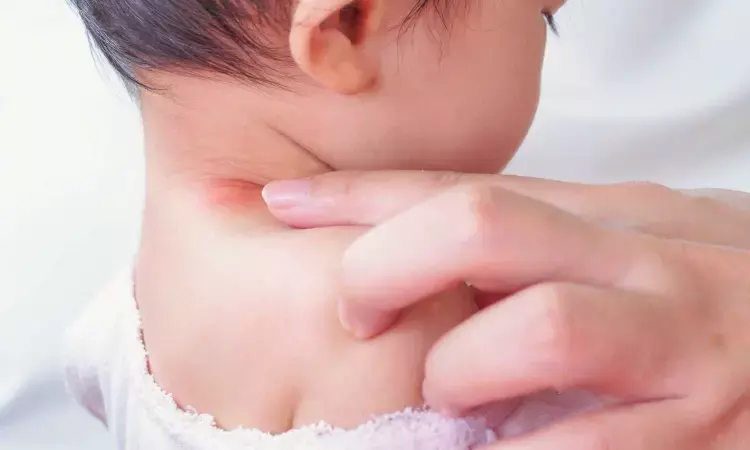- Home
- Medical news & Guidelines
- Anesthesiology
- Cardiology and CTVS
- Critical Care
- Dentistry
- Dermatology
- Diabetes and Endocrinology
- ENT
- Gastroenterology
- Medicine
- Nephrology
- Neurology
- Obstretics-Gynaecology
- Oncology
- Ophthalmology
- Orthopaedics
- Pediatrics-Neonatology
- Psychiatry
- Pulmonology
- Radiology
- Surgery
- Urology
- Laboratory Medicine
- Diet
- Nursing
- Paramedical
- Physiotherapy
- Health news
- Fact Check
- Bone Health Fact Check
- Brain Health Fact Check
- Cancer Related Fact Check
- Child Care Fact Check
- Dental and oral health fact check
- Diabetes and metabolic health fact check
- Diet and Nutrition Fact Check
- Eye and ENT Care Fact Check
- Fitness fact check
- Gut health fact check
- Heart health fact check
- Kidney health fact check
- Medical education fact check
- Men's health fact check
- Respiratory fact check
- Skin and hair care fact check
- Vaccine and Immunization fact check
- Women's health fact check
- AYUSH
- State News
- Andaman and Nicobar Islands
- Andhra Pradesh
- Arunachal Pradesh
- Assam
- Bihar
- Chandigarh
- Chattisgarh
- Dadra and Nagar Haveli
- Daman and Diu
- Delhi
- Goa
- Gujarat
- Haryana
- Himachal Pradesh
- Jammu & Kashmir
- Jharkhand
- Karnataka
- Kerala
- Ladakh
- Lakshadweep
- Madhya Pradesh
- Maharashtra
- Manipur
- Meghalaya
- Mizoram
- Nagaland
- Odisha
- Puducherry
- Punjab
- Rajasthan
- Sikkim
- Tamil Nadu
- Telangana
- Tripura
- Uttar Pradesh
- Uttrakhand
- West Bengal
- Medical Education
- Industry
Green living environment in early childhood does not protect against eczema

According to a new Finnish study, greenness around the home in early childhood does not seem to protect children from atopic eczema. Instead, the proximity of coniferous, mixed forests and agricultural areas was associated with elevated risk of eczema. The effect was seen especially in children who were born in the spring.
“General greenness around the home did not protect children against eczema, which was contrary to our expectations and to the hypothesised allergy protective effect of nature contacts. Eczema is, however, only one of the allergic diseases in children, albeit generally the first to emerge,” says MD Minna Lukkarinen, a paediatric specialist from the FinnBrain Birth Cohort Study at the University of Turku, Finland.
Atopic eczema occurs in 20–30 percent of children. It breaks out most frequently in the early childhood and is often associated with food allergies and the development of asthma and allergic rhinitis at a later age. It is thought that urbanisation and reduced biodiversity increase the risk of allergic diseases, but previous research findings on the topic are contradictory.
The present study utilised material from six Finnish birth cohorts, involving a total of 5,085 children. In a birth cohort, the same children are followed-up from birth, which allows studying associations between environmental early-life exposures and the disease development prior to its onset. This study examined the associations between the season of birth, the greenness and land cover types, surrounding the early-life home, and the development of eczema by the age of two years.
Allergic diseases are among the most common chronic diseases in children with significant public health and economic impact. Finding preventive means are thus urgently called for.
“Although greenness around the home did not protect against eczema, surrounding vegetation can have other beneficial effects. We also must note that greenness is a rather rough measure of nature presence and relatively poor indicator of biodiversity. The observed predisposing association of coniferous forest may indicate that the effects of nature on child’s immunological development vary depending on the type of nature and the biodiversity and the exact timing of the exposures. Further studies are needed to confirm the result and to reveal the possible mechanisms,” says Anne Karvonen, the Chief Researcher at Finnish Institute for Health and Welfare (THL).
Reference:
Minna Lukkarinen, Pirkka V. Kirjavainen, Katri Backman, Carlos Gonzales-Inca, Brandon Hickman, Sampo Kallio, Hasse Karlsson, Linnea Karlsson, Leea Keski-Nisula, Laura S. Korhonen, Katri Korpela, Mikael Kuitunen, Anna Kaarina Kukkonen, Niina Käyhkö, Hanna Lagström, Heikki Lukkarinen, Ville Peltola, Jaana Pentti, Anne Salonen, Erkki Savilahti, Pauli Tuoresmäki, Martin Täubel, Jussi Vahtera, Willem M. de Vos, Juha Pekkanen, Anne M. Karvonen, Published: 07 April 2023 https://doi.org/10.1111/pai.13945.
Dr Kamal Kant Kohli-MBBS, DTCD- a chest specialist with more than 30 years of practice and a flair for writing clinical articles, Dr Kamal Kant Kohli joined Medical Dialogues as a Chief Editor of Medical News. Besides writing articles, as an editor, he proofreads and verifies all the medical content published on Medical Dialogues including those coming from journals, studies,medical conferences,guidelines etc. Email: drkohli@medicaldialogues.in. Contact no. 011-43720751


